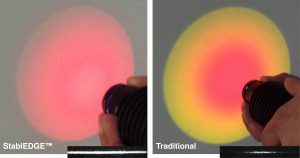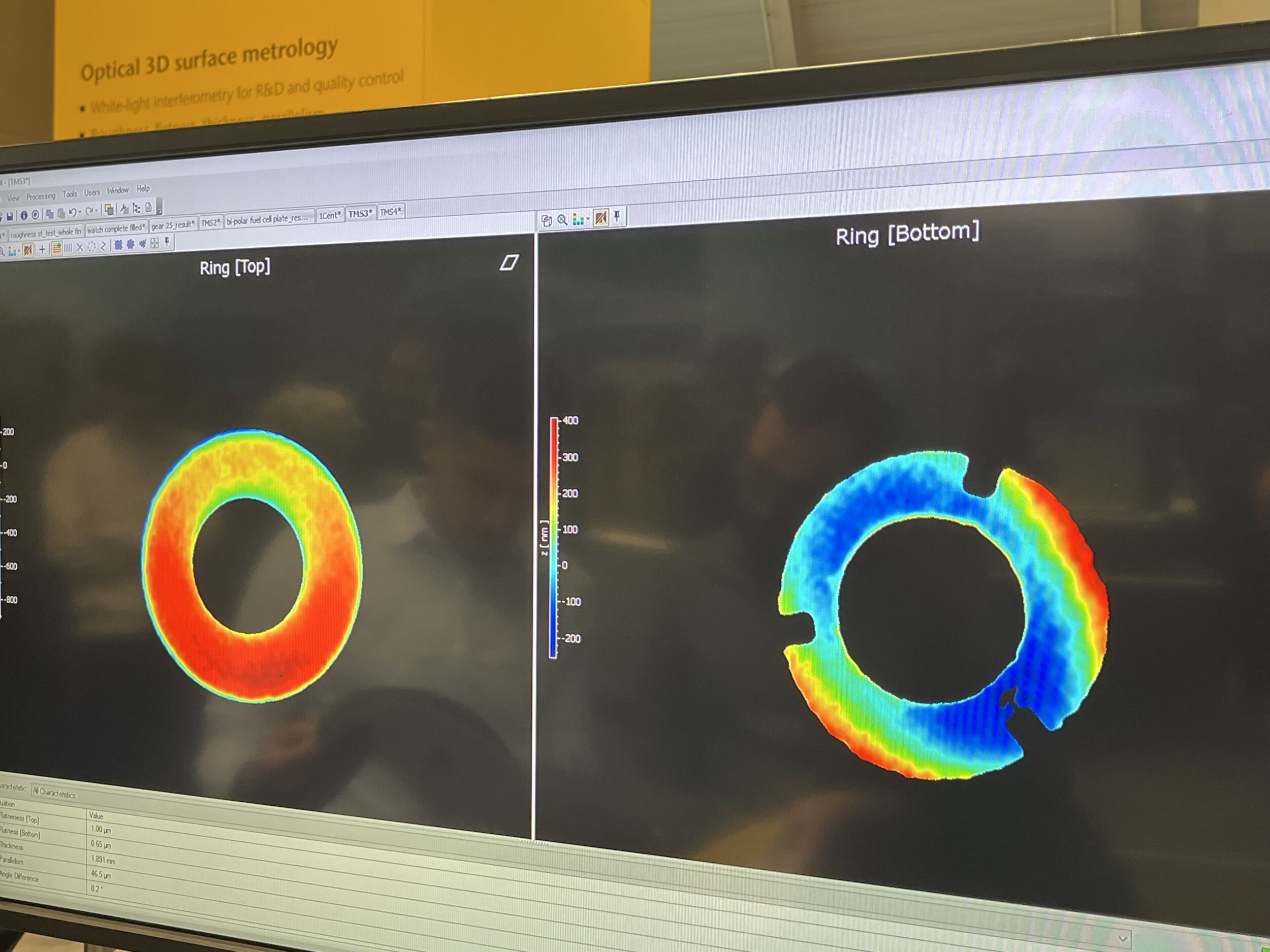Optimal image contrast
Optical filters assure angular insensitivity over the FOV
StablEdge optical filters are specifically designed to be less susceptible to effects from angular shifting seen when optical filters are used with short focal length (less than 12mm) camera lenses. This feature is becoming increasingly important as today’s trend in machine vision progresses towards more compact inspection layouts, which utilize less space – forcing the camera and lens closer to the subject. As a result, short focal length lenses are now more extensively used than ever before.
Mounting a traditional coated interference filter on the front of a lens in these more compressed configurations results in contrast loss toward the edges of the image. Because of the increased angle out at the edges imposed by the wider field of view (FOV) of the lens, the passband shifts and allows shorter wavelength ambient light to overwhelm the subject (Bild 1). Light from LED or laser diode lighting is also cut off. In contrast, peak transmission of StablEdge filters is not significantly altered, and effects due to short shifting are minimized (Bild 2). These filters take advantage of absorptive filter glass to form the leading edge of the filter passband. This assures no shifting in this region, even when the lens FOV exceeds 100°. Filter glasses also offer far superior lower wavelength blocking of ambient light, sharp transition slopes and unmatched durability. The filter cut-off slopes utilize interference filter coatings, however the cut-off slope is positioned to be sufficiently broad, and the Gaussian passband profile ensures that excessive ambient light is not allowed to degrade image contrast. Thus, shifting will not significantly encroach into peak transmission, assuring angular insensitivity over the desired range. Aside from being less sensitive to angle-of-incidence changes, they are inherently more rugged and environmentally stable. They can be found in MidOpt’s bandpass, acrylic, light balancing, shortpass and longpass series filters.

Collimated LED light projected through 3.5mm FL lens with red bandpass filters. The traditional filter exhibits angular shifting out towards the edges. Inset: Red Laser line imaged through same lens. (Bild: Midwest Optical Systems)
Advantages
StableEdge filters therefore maintain optimal contrast and accuracy in any inspection arrangement. There is no need to sacrifice performance or speed as a result of space limitations and FOVs exceeding 40 degrees – situations where traditional coated interference filters will result in a loss of brightness or contrast at the edges of the image when fields of view exceed 30-40 degrees. Subject recognition is further improved due to high peak transmission (>90%) and the Gaussian shape of the passband that follows the spectral emission profile of commensurate LED lighting. Compared to square-wave bandpass interference filters that restrict LED light transmission or permit excess ambient light over spectral regions where LED output is low, contrast using StablEdge bandpass filters can be increased by more than 25%.












